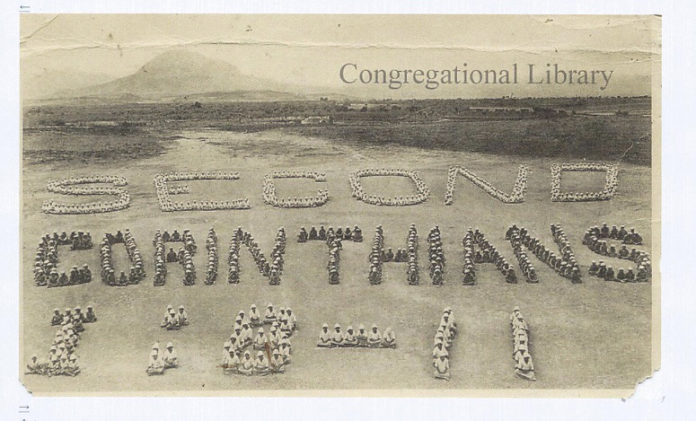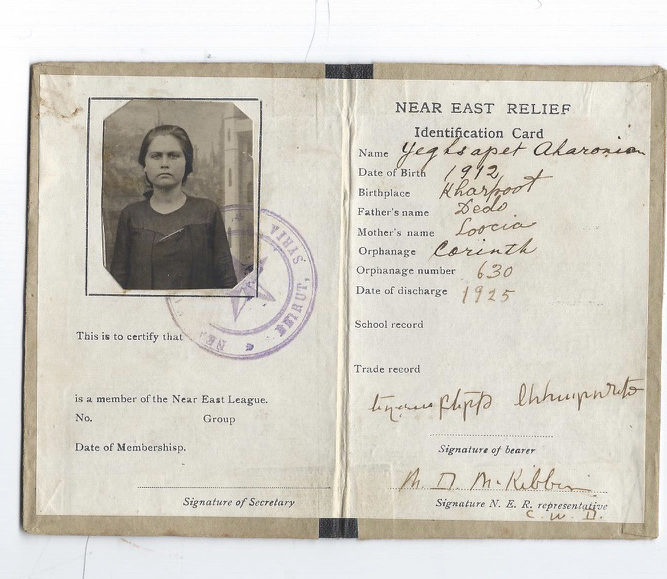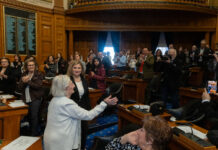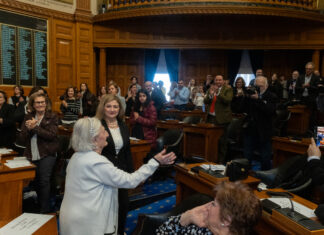By Charles N. Mazadoorian
Special to the Mirror-Spectator
The photograph above of a scriptural message formation which was taken in the Greek City of Corinth in 1923 has always fascinated me. The words “Second Corinthians” and the numerical reference “1:8:11” were formed by the Armenian children who were being cared for by the Near East Relief Foundation at an orphanage site in Corinth. My mother remembers being in the formation for the photograph although she does not remember of which letter or numeral she was a part. It appears that the children were arranged at the foot of a steep hill or mountain so that the photographer was able to look down upon them and get far enough away to take in the whole formation. Perhaps he even had a wide-angle lens.
This photograph of course was not the only such photo taken at Near East Relief orphanages throughout the region. These photographs were likely used for many purposes, including fundraising, brochures and acknowledgement and letters of thanks to those in America who so generously contributed and raised money for the orphans and Genocide survivors. One such photograph simply displayed a very straightforward message from the orphans spelling out the words “America We Thank You.”
The picture shown here was also likely intended to express the appreciation of everyone who worked on behalf of the Near East Foundation in the Middle East, as well as and especially of the children to themselves, to their benefactors in the western world. Significantly, it also sought to express a spirit of gratitude and hope and to seek further prayers for the orphans and thanks to God. It was believed, perhaps somewhat naively, that those receiving the message on the card were mostly Christian and familiar with the New Testament. Hence the use of a scriptural reference as a message from the Armenian orphans to those people in the western world, and in particular America, who had contributed to the financial and spiritual support of the Near East Relief.
It was a unique and appropriate — indeed brilliant — idea for the Near East Relief Foundation leaders to have these orphans and survivors form the letters and numerals of this particular scriptural reference. It was a photograph intended to send a message in code, so to speak; a code not in the sense of being a secret but, in the sense of using that scriptural reference as a shorthand method of saying something as powerful and as moving as only the great Apostle Paul himself could say it. What follows is my favorite version of Paul’s words. It is based for the most part upon a translation found in The New Testament in Modern English by J.B. Phillips. However, I have also added some words here and there to paraphrase the translation. Although this particular combination of paraphrase and translation was not available in 1923 ( The King James version was and still is the most universally read English translation), it does nonetheless accurately and powerfully convey the spirit of the message in the photograph.











